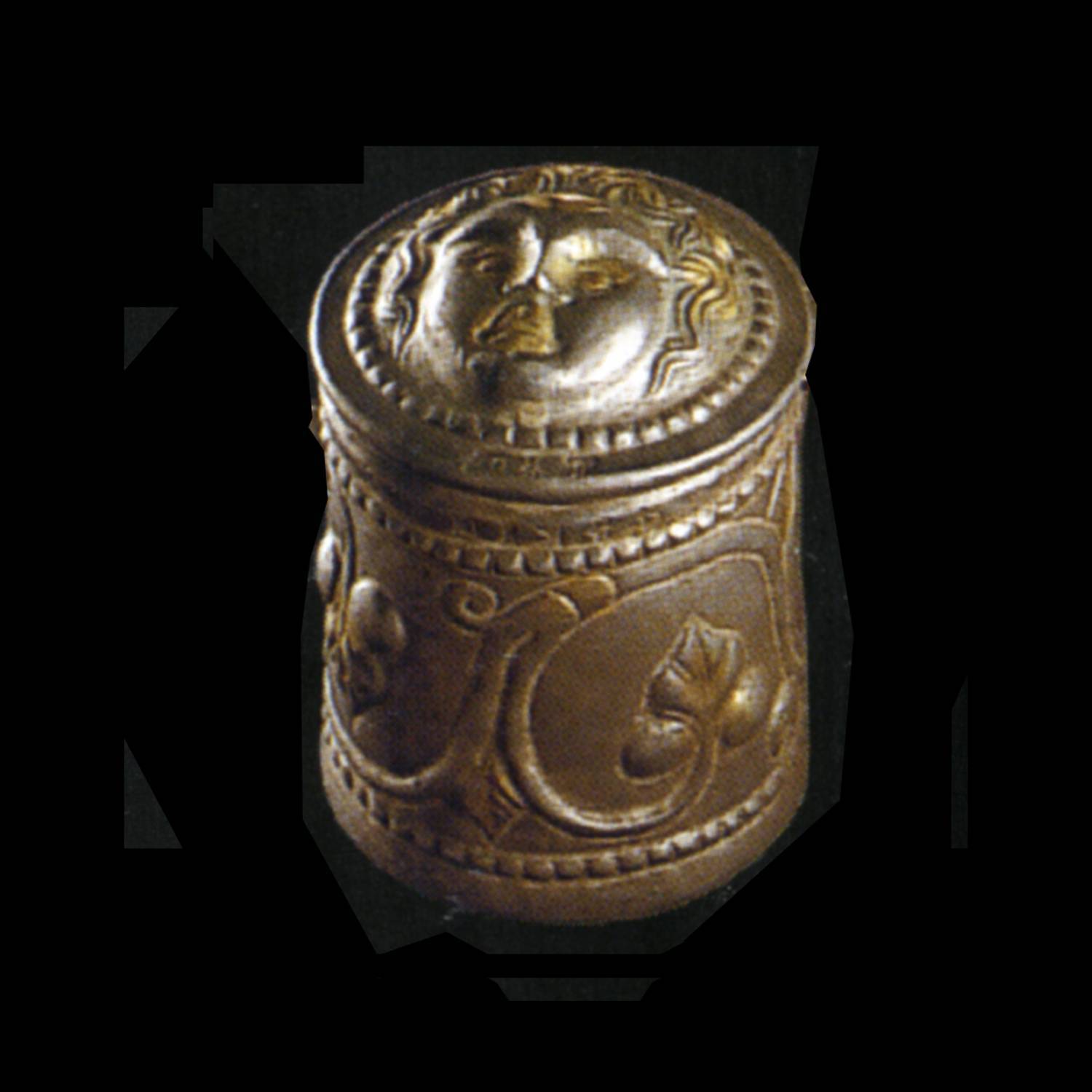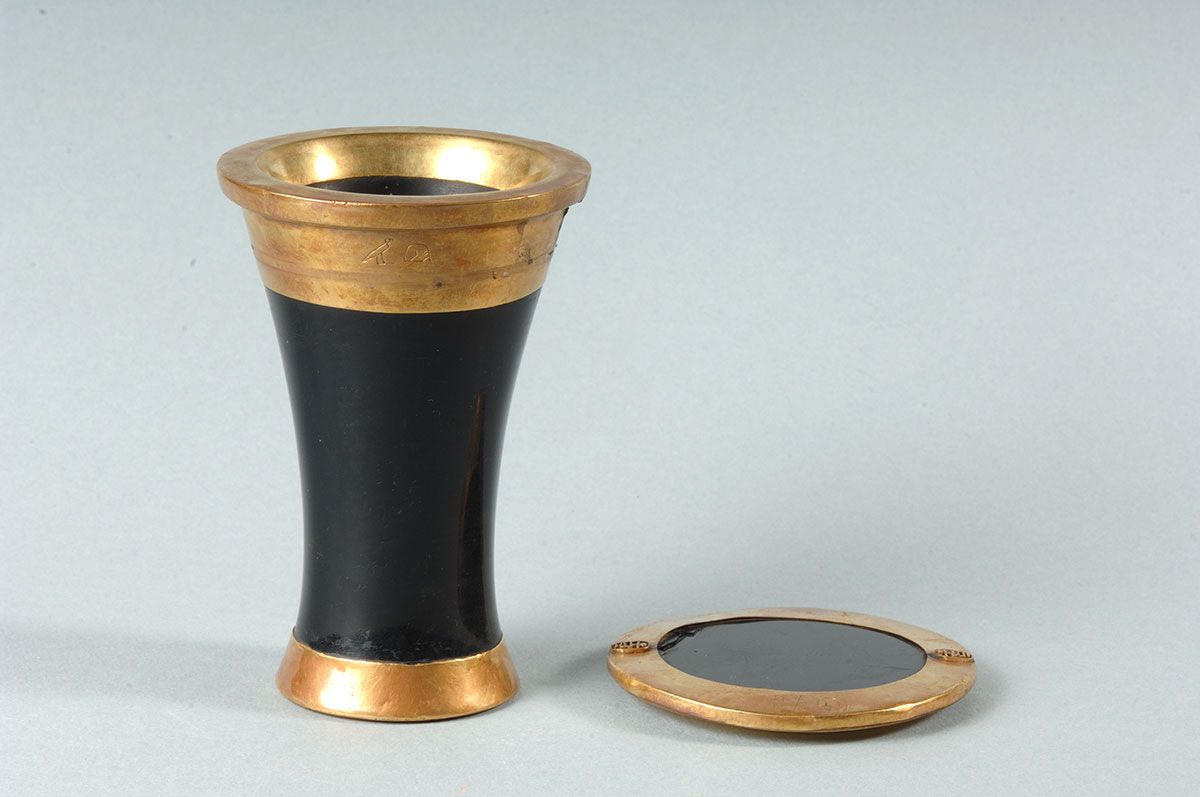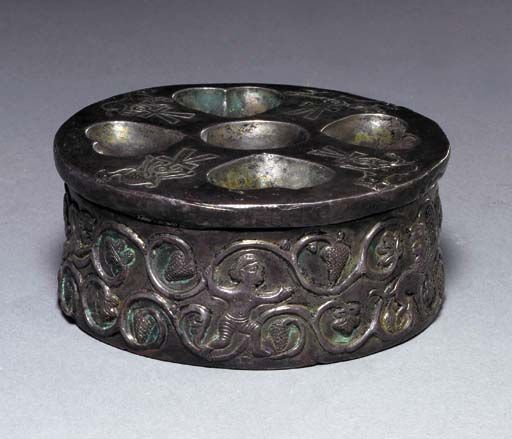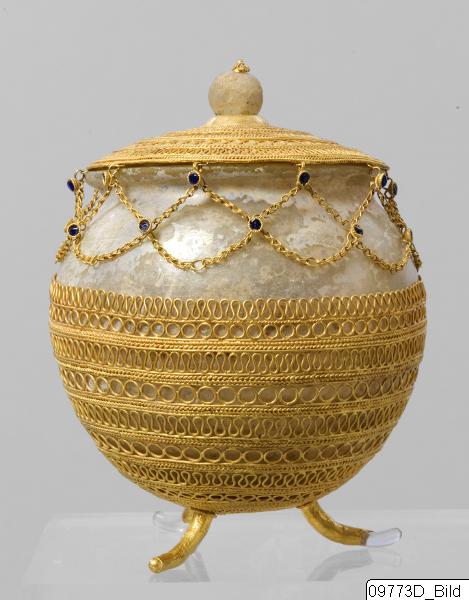In 1997 at the necropolis from Iron Age on Lisichin Dol near the village in Marvinci, the Republic of Macedonia, there was discovered the grave of an approximately 35-year-old woman. The burial is dated to the 7th century BCE. About 400 bronze objects were found on the body of a woman, among them the chalice suspended on two long chains, that is considered a ritual object and an indication of the priestess role of a woman. According to Nikos Chausidis, some researchers believe that the hanging vessel, in which traces of opium were found, was used as a censer – “the poppy-seed tar, which smoldered, warmed up in the embers, was evaporating so that through its swing, the psychotropic vapors spread around, acting narcotic and hallucinogenic on those present in the ritual”.
The chains on which the container is suspended are terminated with long arched elements that probably served as handles.
The ceremonial belt, consists of a large circular plate made of bronze attached to a belt of organic material on which were sewn more than a hundred clay buttons and a composite object, ending with a pendant in the shape of a poppy cup in which traces of opium were found.
Source: Nikos Chausidis, A “Priestess from Marvinci” or a “Harnessed Wife”? Semiotics of the Iron Age Cheek-Pieces from the Group of “Macedonian Bronzes”, 2017 https://www.academia.edu




Benaki Museum, Athens
https://www.benaki.org
“Bronze pendant – “pyxis”. It belongs to a category of bronze Macedonian jewellery, which may have had symbolic significance and therefore was associated with a religious or secular dignity. From Tito Veles, Macedonian Iron Age, 10th-9th c. BC. H. 0,014 m. (ΓΕ 7888)”
Benaki Museum, Athens
https://www.benaki.org

Photo: Maja Janevska-Ilieva
https://novamakedonija.com.mk



Cult bronze cup, 7th century BC, Suva Reka, Gevgelija
“A bronze cup in the shape of a “poppy” bulb, is often composed of three elements: a lid with a vertical holder, a bronze spherical bead and a body (stomach). On the two specimens from Suva Reka and Bishov Javor, the lid, rim and bottom of the body are flanked with bird protomes. These older forms of “Macedonian” (Paionian) bronzes, from the period of the developed Iron Age, 7th – 6th century BC, had a cult character, so they are often identified as “cult bronzes”. The cult character is determined not only by the form and the place of wearing, but also by its content, in which morphine is registered – poppy tar. It certainly played a key role in cult ritual, although its more immediate function has not yet been satisfactorily defined. Within the framework of the “Gevgelian” cultural group from the Iron Age, finds of this type are frequent in necropolises, so that in addition to these two, new samples were found in the grave goods of the Bolovan – Bogdanci necropolis.”
Хусеновски Бобан [Boban Husenovski], Водич низ постојаната археолошка поставка, НУ Музеј Гевгелија, 2005
- На пајонската свештеничка ѝ треба поголема афирмација, Катерина Богоева [2019] https://novamakedonija.com.mk
- A Paion priestess from Miltsi will travel to Chicago https://novamakedonija.com.mk
- https://arheo.com.mk/2014/12/25/paeonian-identity-of-ancient-macedonia/
- Boban Husenovski, Археолошки водич – Гевгелиско Валандовски регион, Гевгелија 2012 https://www.academia.edu
- Husenovski B. – Patrimonium.mk 17_Skopje_ 2018 A FEMALE GRAVE WITH A CULT ROD IN THE NECROPOLIS OF MILCI –GEVGELIJA https://www.academia.edu/38202685/Husenovski_B_Patrimonium_mk_17_Skopje_2018_pdf












